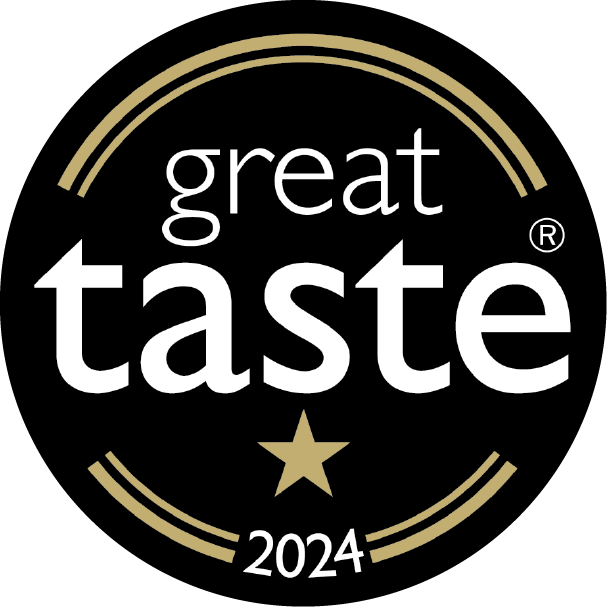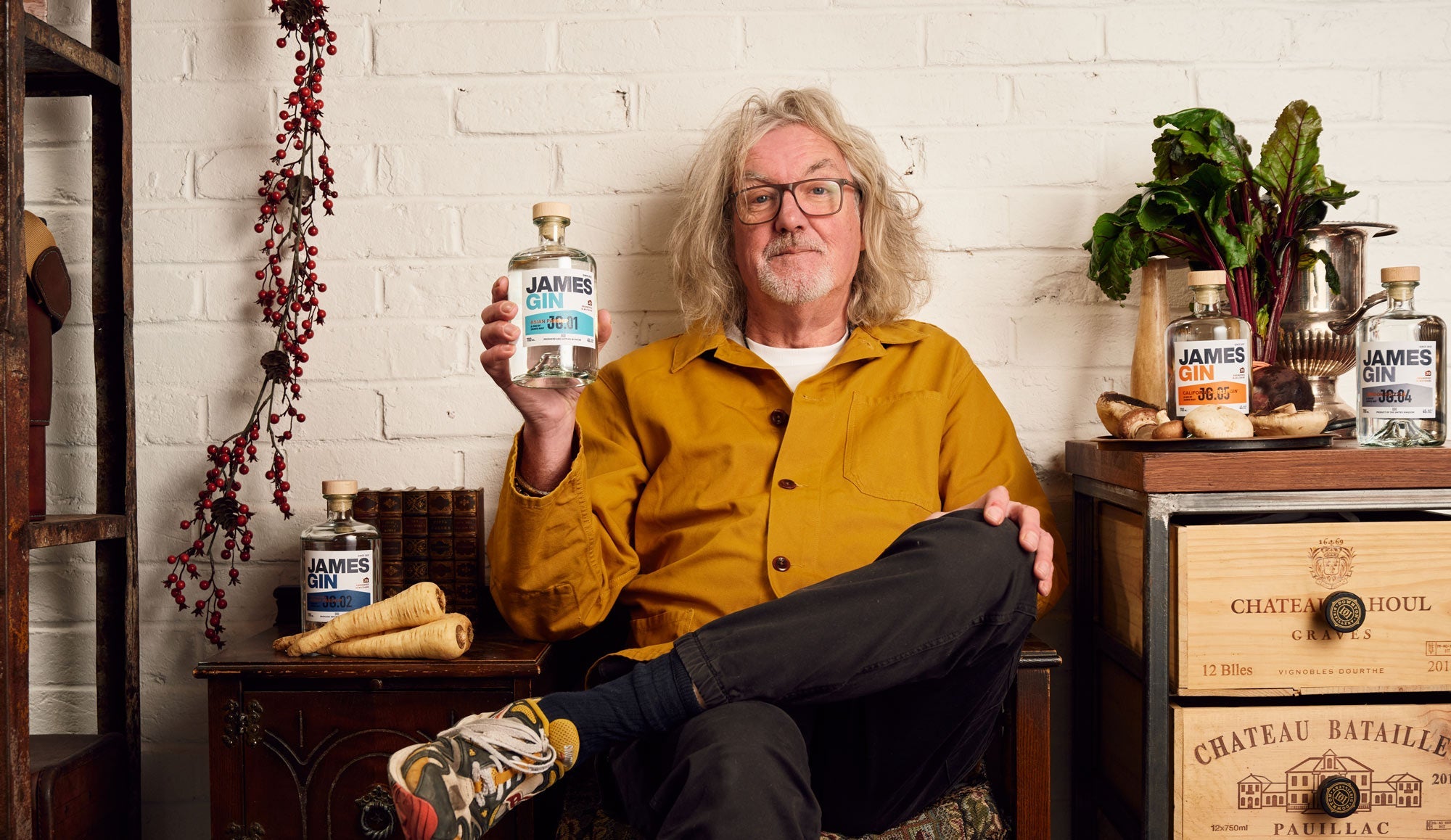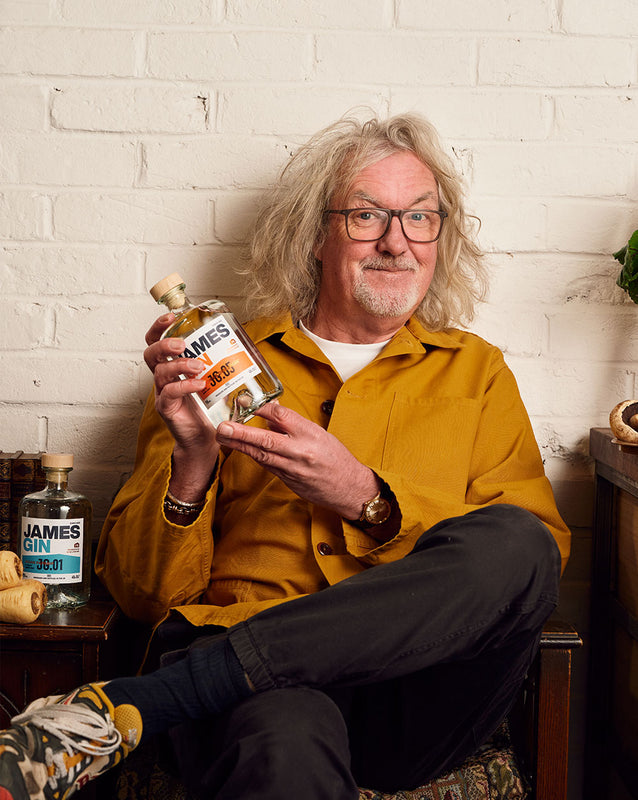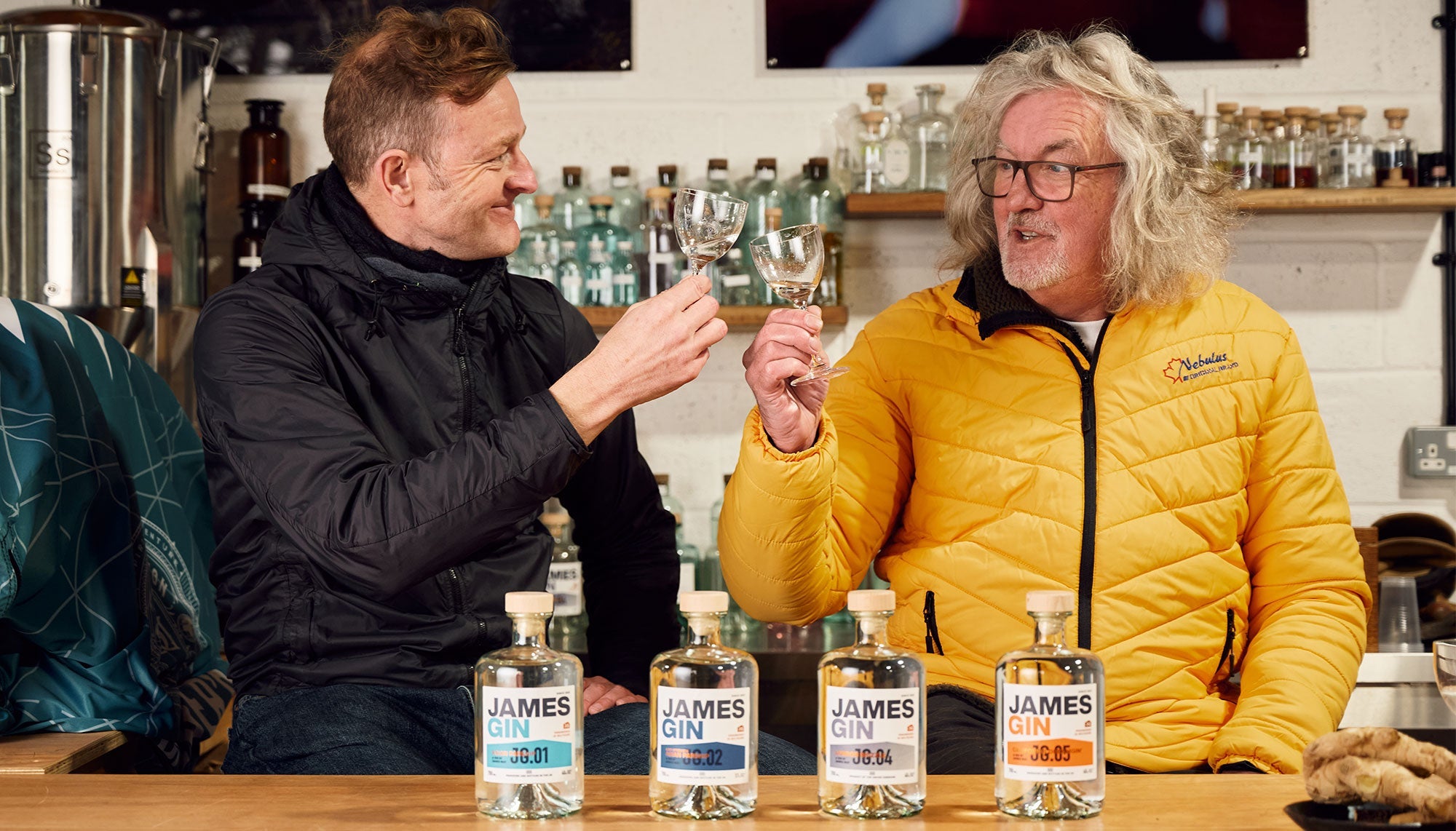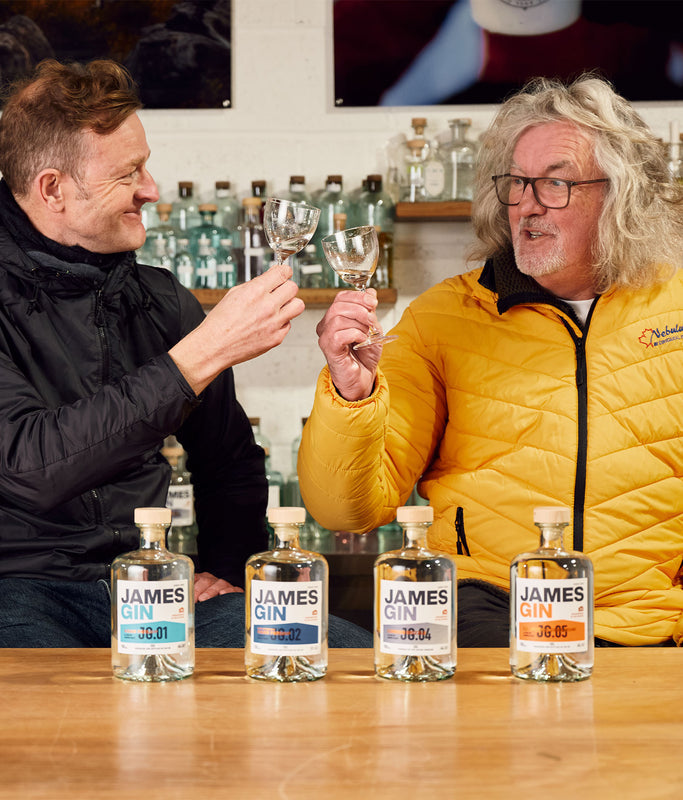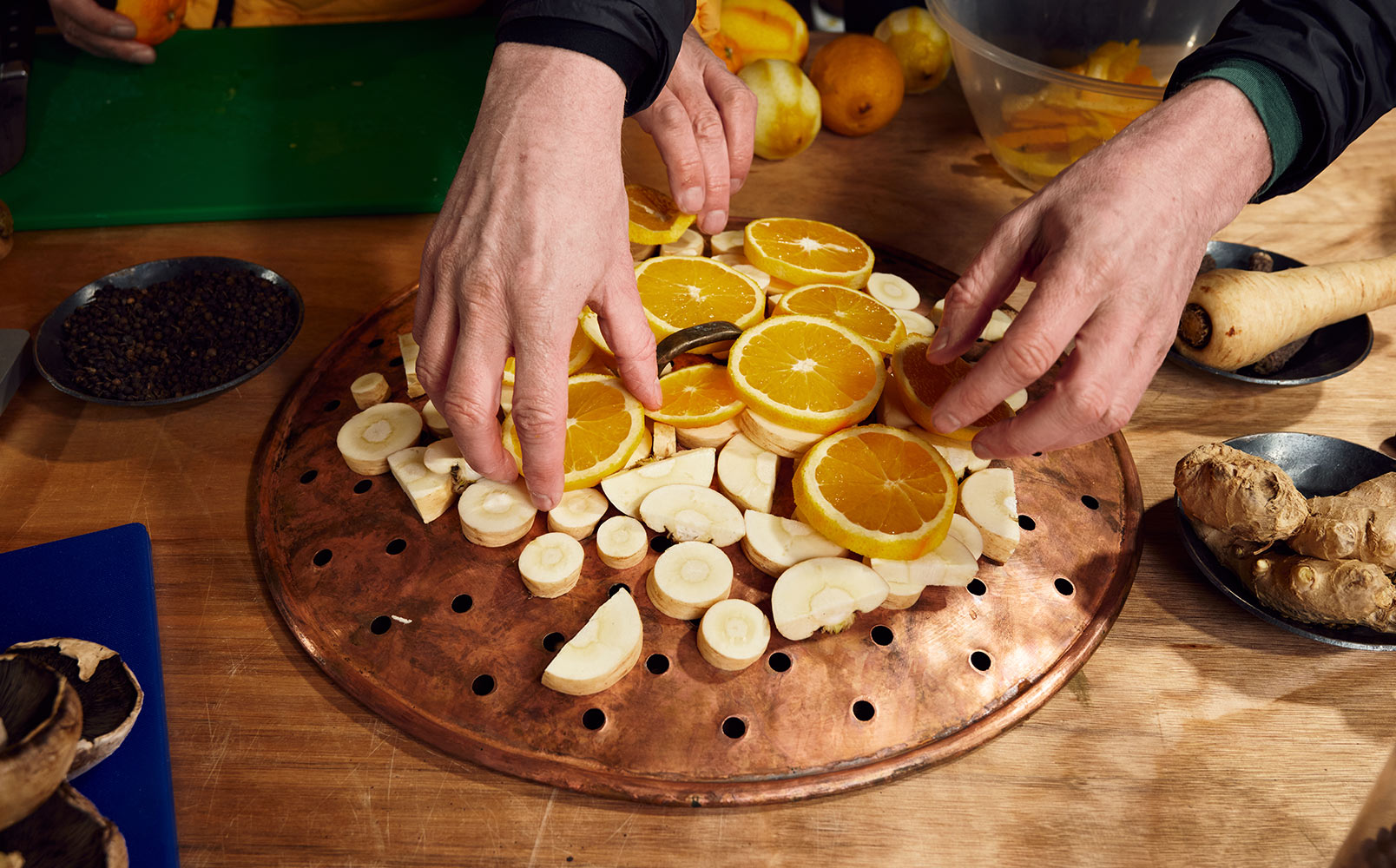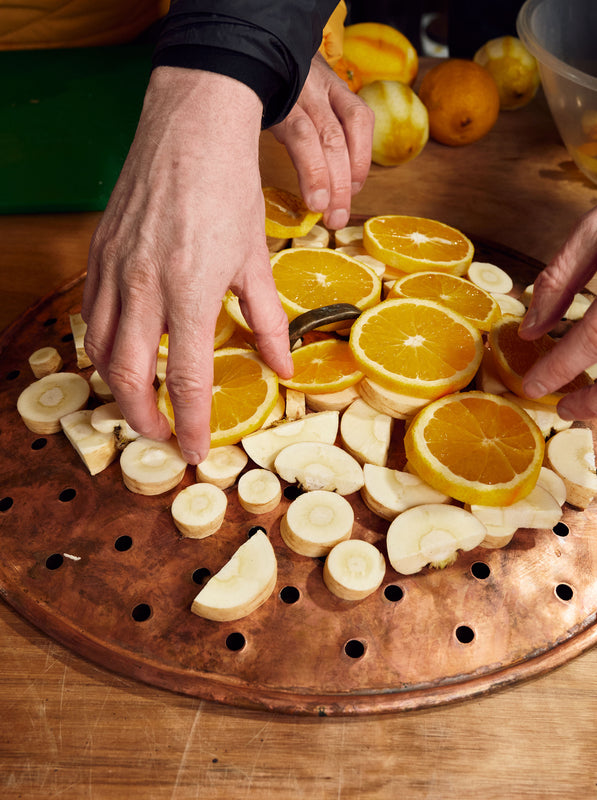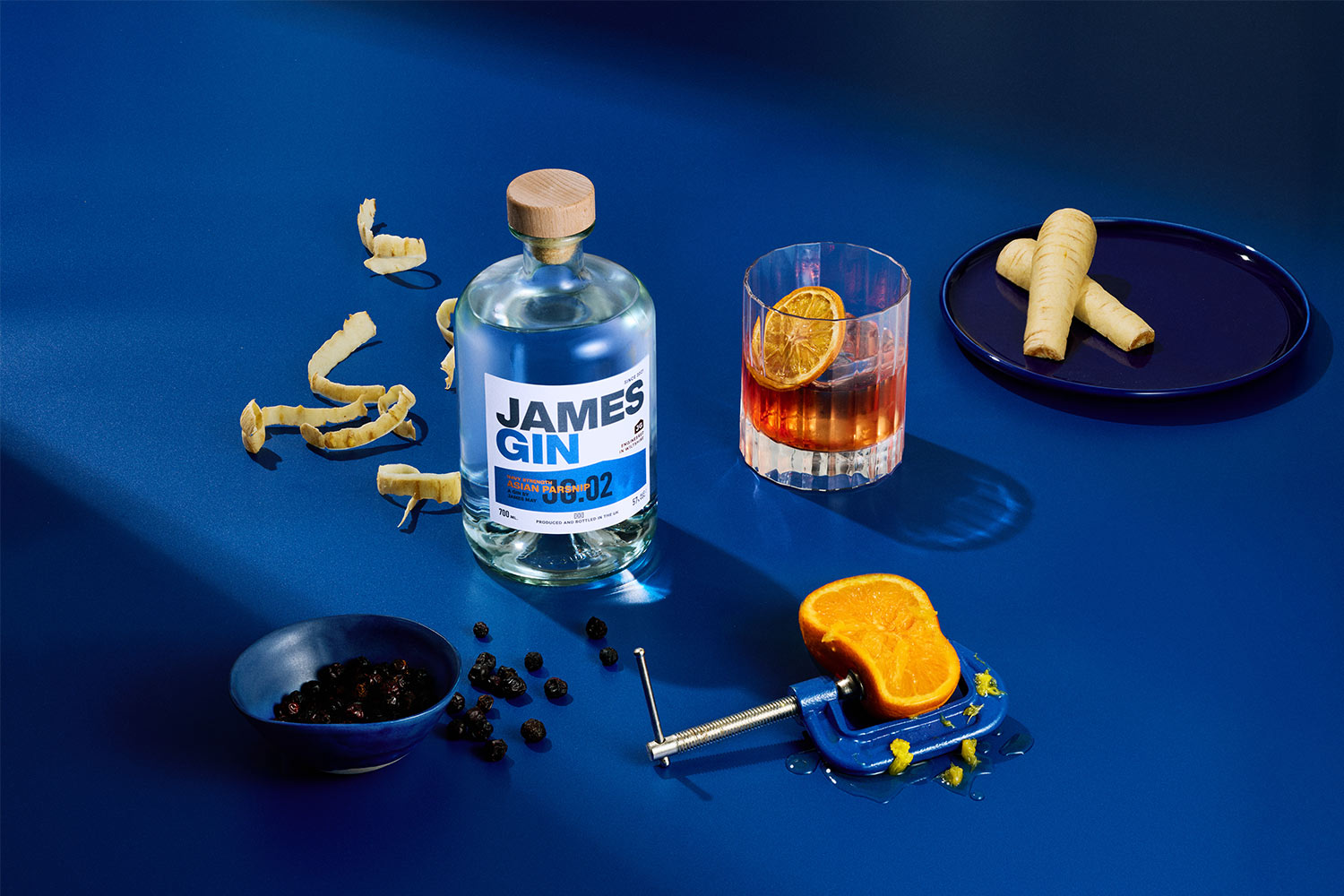Any reasonably conceited TV presenter or Hollywood actor will eventually have a go at making a gin and I was conceited enough to try it. But, in my defence, my gin really is mine, not a cynical branding exercise.
I’d made some gin once on a TV show I made years ago and I’d always wanted to have a go with another one, and do something a bit more left field. Every now and then I'd pick up something or eat something and I'd think ‘I wonder if that would work as gin?
Originally we’d intended to set up a small still in my garage so that I could experiment with some flavours - but it soon became clear that if I did so I would almost certainly go to prison.
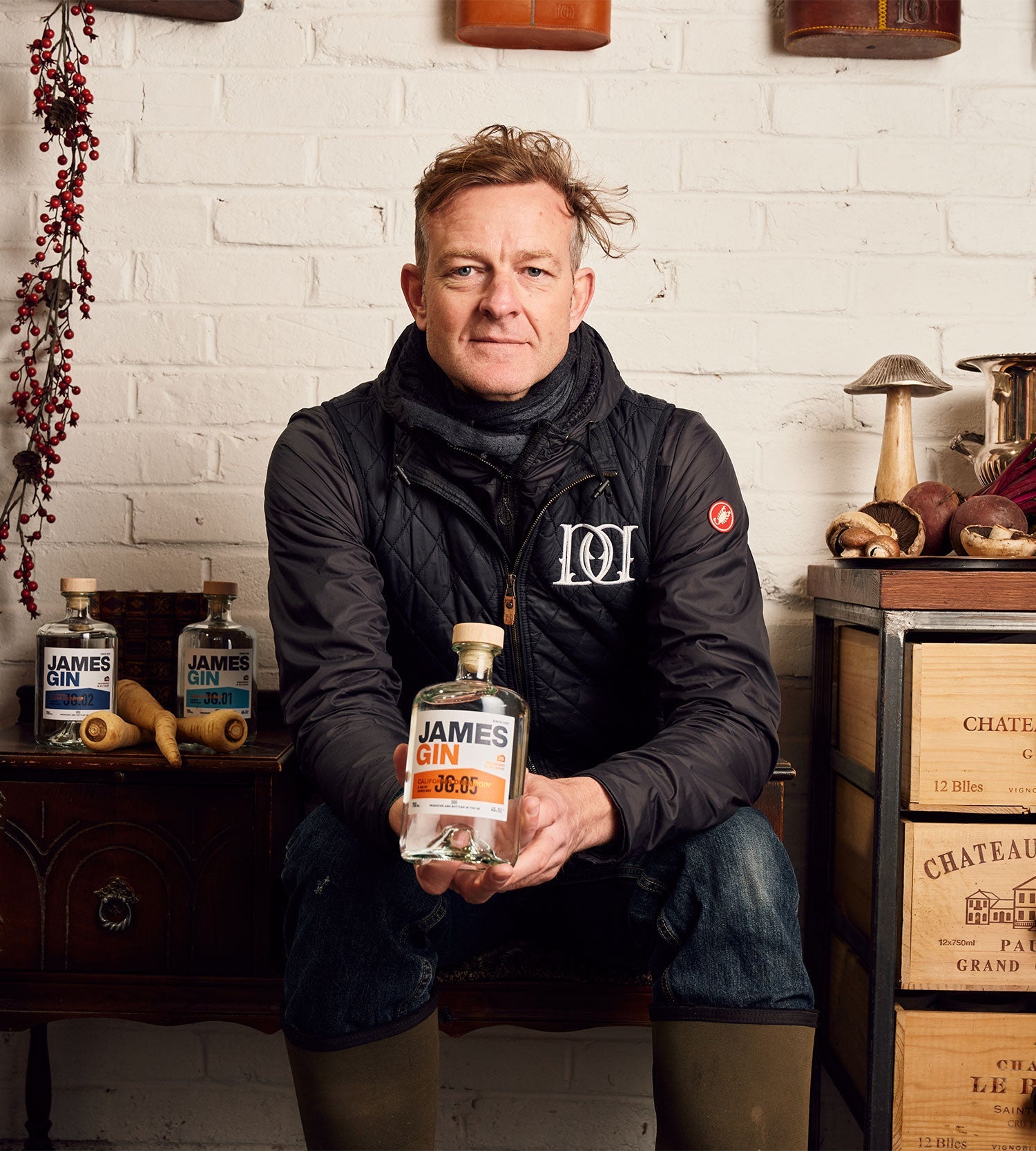
MEET THE DISTILLER
To avoid prison, we looked for someone we could work with and came across Hugh Anderson, formerly a soldier and now a Master Distiller lurking in an alarmingly cold shed about 20 miles from my pub in rural Wiltshire. Hugh is the Willy Wonka of gin flavours (at least we think that’s what the bloke in the Transit van shouted).
I came up with this idea for Asian Parsnip, and Hugh said it was probably worth making a thousand bottles for the pub and to see if anyone else would buy it. He's a craft distiller, so that's as much as he can make really. We put it online. I tweeted about it, and we sold it all within a few days, which was a bit of a surprise. So, we made another batch. And then another one. And then we invented more flavours - like London Drizzle and most recently California Dreamgin’.
Our experiment, originally intended as a bit of fun, has turned into a gin-fuelled monster. The shed, where the magic happens, remains as freezing as ever.
The interesting thing about the spirits world, about which I knew nothing before – apart from obviously my enthusiasm for drinking them – is that people are very enthusiastic about it. You have to be really very interested in the stuff that people are making, even if you're distilling it on someone else's behalf or you're a big distributor. You have to be enthusiastic. You can't turn up and simply flog it to a pub.
You have to be able to talk about it because your rival is a wine enthusiast, gin enthusiast, or whiskey expert. They will outdo you because enthusiasm counts in a business that's ultimately about pleasure and having a nice time. It's not quite the same as selling refrigerators or self-tapping screws.
Gin isn't particularly hard to make - it’s quite easy to chuck pretty much everything from wood chips to grass cuttings to bits of old fruits to nuts into a still and make gin. But it is hard to make something that people love. Like James Gin, for example.
My gin is made in the UK, the country that brought you the Hawker Hurricane and the Triumph Spitfire. It is created by men in parkas in cold sheds, then produced in industrial quantities in a drinks laboratory, controlled by computers. So what does that actually look like?
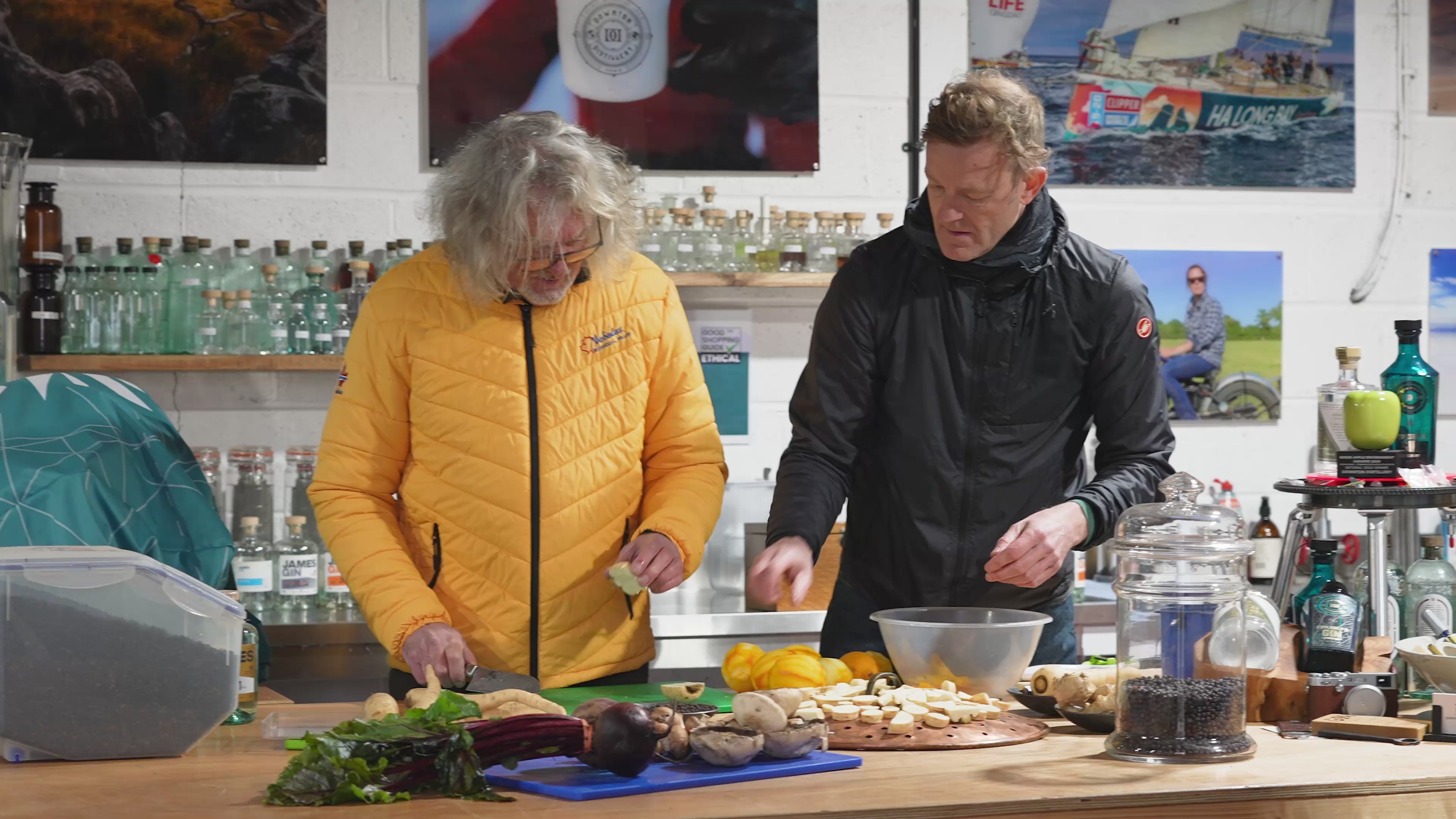
ENGINEERING IN WILTSHIRE
When I come up with an idea for a new gin – this California Dreamgin’ for example – I take it to Hugh and a few weeks later he invites me down to his freezing shed to try some ideas. This generally takes some time and involves a great deal of standing about in thick coats ‘testing samples’... Eventually we agree on the recipe – and he makes up a sample in his 3L test still.

UPSCALING IN LONDON
Hugh’s micro-distillery is perfect for engineering our ideas - but it’s far too small for the quantities we now need to make. So the recipe has to be scaled up at Thames Distillers in London - where they’ve been doing this since the 17th century. This process is not straightforward…and again required multiple trials before being signed off. Once it is, the concentrated distillate is sent to Essex…

BOTTLING IN ESSEX
Here they then add demineralised water and British Neutral Grain Spirit to the concentrate, to create the final product at 40% ABV. Our gin is made with British water. From pipes. Made by Victorian Engineers. So it’s better. Then it’s bottled, labelled, corked and sealed.
When I started out with the thought of making some gin for my pub, I thought it should be fairly simple. As you’ve seen, it isn’t….but thanks to all of these people - in Wiltshire, London and Essex, James Gin is now The Gin of the People…..
INGREDIENTS
Most craft gin brands talk a great deal about the properties of their ‘unique blend of botanicals’. So why shouldn’t we? Here’s our cut out ’n’ keep guide to all of the ingredients used in our gins. Spot the empty bucket. Click below to see our ingredients...
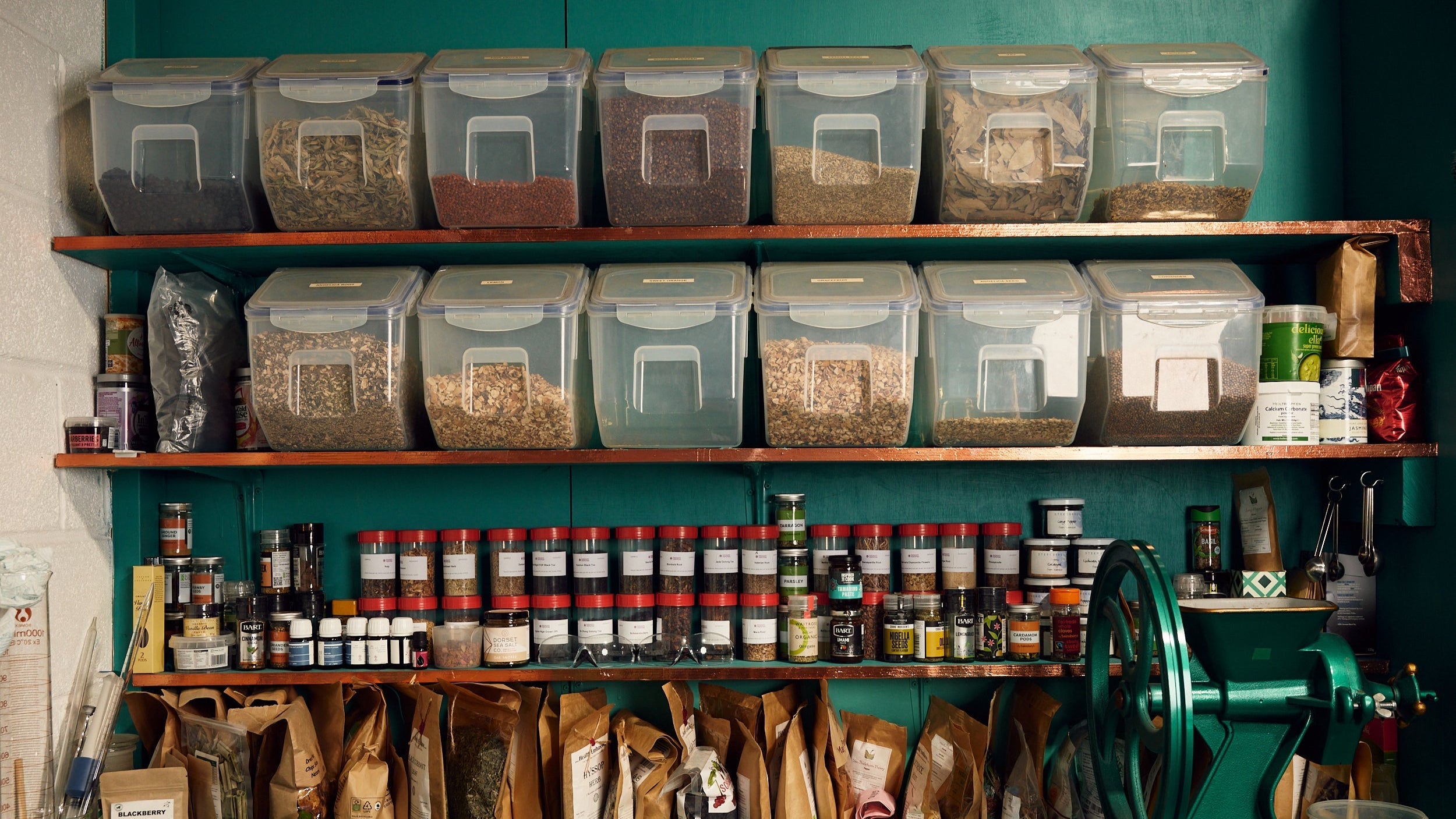

all our gins contain:
JUNIPER
Gin must contain juniper or it isn’t gin. In fact, the name ‘gin’ is a shortening of the Dutch word for juniper, ‘jenever’. Not to be confused with ‘Geneva’ which is both a place and a convention but not a drink.
Angelica Root
Angelica Root was the name of a famous 1920s blues singer from the Mississippi region. Here, it’s a botanical.
WATER
Our gin is diluted to 40% ABV (or 57% for Navy Strength) by adding water. Because we appreciate the work of 19th century civil engineers, we use tap water; not hand-drawn Highland Spring or Wiltshire chalk stream water, because that’s just nonsense and anyway it wouldn’t be as good.
Liquorice Root
Seventh son of Angelica (see above), Liquorice was born blind and, therefore became a blues guitarist. His band, The Allsorts, remains unknown beyond the Mississippi Delta.
Coriander Seed
Some people are genetically indisposed towards coriander, and believe it tastes of soap. They’re just weirdos, so it’s in the gin.
Asian PARSNIP
PARSNIPS
The Emperor Tiberius accepted part of the tribute payable to Rome by Germania in the form of parsnips. For the purposes of buying our gin, parsnips should not be considered a currency.
GRAINS OF PARADISE
John Russell characterised grains of paradise in The Boke of Nurture (1460) as "hot and moist”. Use that information as you wish.
ROSEMARY
Not the mythical riveting factory worker of American WWII recruitment posters, just a herb.
NAVY STRENGTH
PARSNIPS
The Emperor Tiberius accepted part of the tribute payable to Rome by Germania in the form of parsnips. For the purposes of buying our gin, parsnips should not be considered a currency.
GRAINS OF PARADISE
John Russell characterised grains of paradise in The Boke of Nurture (1460) as "hot and moist”. Use that information as you wish.
ROSEMARY
Not the mythical riveting factory worker of American WWII recruitment posters, just a herb.
CALIFORNIA DREAMGIN'
MUSHROOM
In many European cultures, mushrooms are often connected with fairies, elves, and other mythical creatures. The more of this gin you drink, the more likely you are to see them.
OREGANO
In the middle ages, oregano was ‘worn on the head at night to induce psychic dreams’. Balance a bottle of our gin on your head to see if the same thing happens.
PATCHOULI LEAF
Patchouli was the defining scent of the American counterculture movement in the 70’s. It is also thought to be a bringer of prosperity and abundance. Which will be handy for buying the next bottle, dude.
LONDON DRIZZLE
BEETROOT
According to legend, beet was the root of Aphrodite's ageless beauty. However, as the phrase ‘according to legend’ is a sure sign of craft gin marketing bollocks, here it’s in the gin to make it taste good.
LOVAGE
In Celtic traditions, lovage was believed to relieve exhaustion, and the leaves were placed in the shoes of travellers at inns. This tradition has not yet been extended to my pub, so it’s in the gin instead.
GINGER
Although used in traditional medicine and as a dietary supplement, there is no good evidence that consuming ginger or its extracts has any beneficial effect on human health. But just in case it does, it’s in the gin.
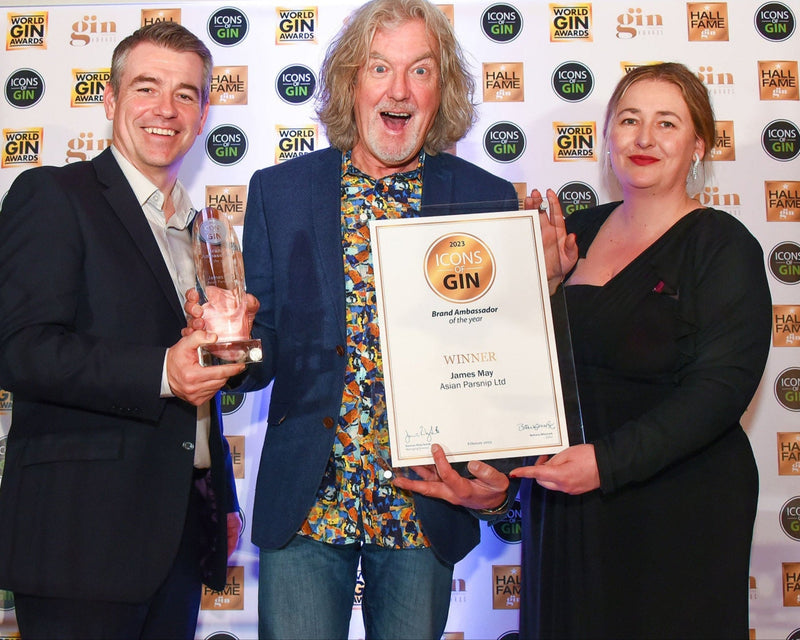
MULTI-AWARD WINNING
We’ve won quite a few awards for our gin and we’re very proud of them. We’ve even been to an awards ceremony where we drunk a great deal and listened, dumbstruck, to a Four Tops tribute band.


